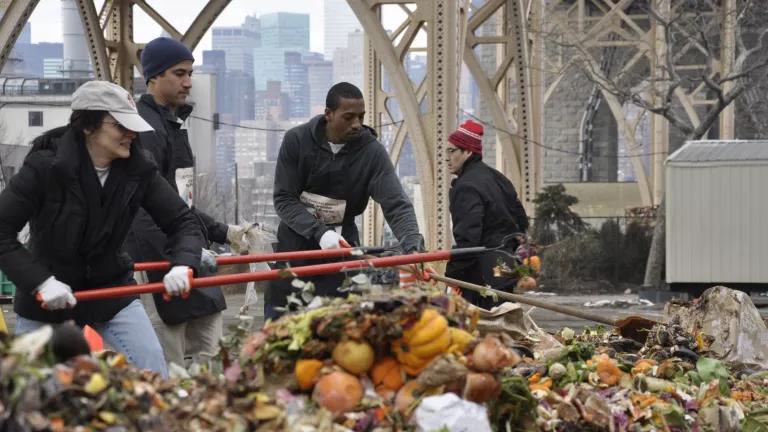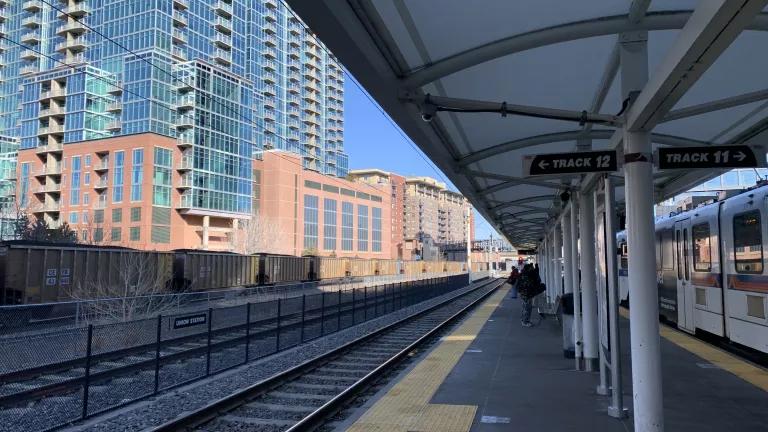A provocatively titled study crossed my desk this week: “Spatial Distribution of U.S. Household Carbon Footprints Reveals Suburbanization Undermines Greenhouse Gas Benefits of Urban Population Density” by Chris Jones and Dan Kammen at the University of California at Berkeley. I wasn’t the only one who took note, as articles appeared, for example here and here, on the internet.
The authors have created econometric models to determine household carbon footprints down to the zip code level. They relied on national data sets, so it’s pretty impressive they achieved such a level of granularity. You can find out what they calculate the footprint to be for you and your neighbors at their web site’s interactive map here. All they need is the number of people in, and the approximate income of, your household. According to the site, my household’s footprint is 82.3 tons of heat-trapping carbon dioxide annually Given weaknesses in the model – see below regarding broad-brush-stroke assumptions – I don’t put much stock in that number.
When you pull back the lens it gets more interesting. Maps showing heat-trapping pollution include red areas that jump out of heavily-populated regions, especially on the eastern seaboard. And within these red zones, there are some interesting findings. Suburbs, which as the authors point out account for about half of the total aggregate U.S. household carbon footprint, vary in terms of their footprint. And, especially in large metropolitan areas, they account by far for the most pollution as the authors conclude in the statement that clearly caught reporters’ eyes:
[L]arge, dense metropolitan areas do contain locations in city cores with very low HCF [household carbon footprints] compared to smaller, less dense cities, but they also contain suburbs with relatively high HCF, more than offsetting the benefit of low carbon areas in city centers.
The correlation with metro size is news to me: “As metropolitan size increases the range between the lowest and highest HCF locations also increases, growing from a factor of 1.5 difference in small metropolitan areas to a factor of 4 difference in the largest.” Suburbs in these large regions pull up regional averages, except LA and NYC which “break this trend” by showing lower than average footprints.
There is a great deal more information in the study, including the big caveat about challenges of “uncertainty and the methods used to derive the estimates” which makes more local findings suspect. Fuel economy, diet, housing construction, water and waste-related pollution estimates in the model don’t vary as much as in real life due to lack of more granular data sets.
The big picture strongly affirms our work here in the Urban Solutions program where we focus on transportation, energy efficient housing and buildings, and suburban sprawl. We have long known that improving the environmental performance of cities alone is a necessary yet insufficient step towards sustainability. Suburbs and indeed entire metro regions deserve problem-solving collaboration as well. This is what NRDC has been preaching and doing for years. And we’re fortunate to collaborate with mission-aligned allies such as Smart Growth America, the Brookings Institution, and the Center for Neighborhood Technology.
What’s really exciting about this work is finally having the wind at our back, and I see the evidence in my travels. Just three examples make the point:
- Recently I spoke to the Puget Sound Regional Council about their strategy to “grow transit communities” thanks to billions of dollars of transit investment in the region, surely one of the reasons an update to their transportation plan out to 2040 projects less traffic and congestion than before.
- The Chicago region’s 2040 plan is impressive too, and technical staff for the planning organization are busy assisting many of the regions’ 284 communities to overhaul their local plans as well.
- And then there’s southern California, which if it were country would have the 16th largest economy in the world. Its new Sustainable Communities Strategy for 2035 has received much praise; perusing the Southern California Association of Government’s summary of its benefits including more than 500,000 new jobs and a 24 percent drop in health incidences due to air pollution (fact sheet pdf here) shows why.
NRDC’s Urban Solutions program is already working with suburbs and entire regions like these, and we’ll keep pressing forward and moving onward. I hope you’ll join us in the search for solutions.




